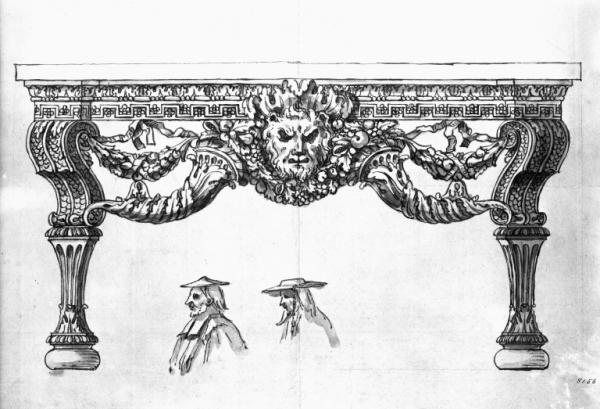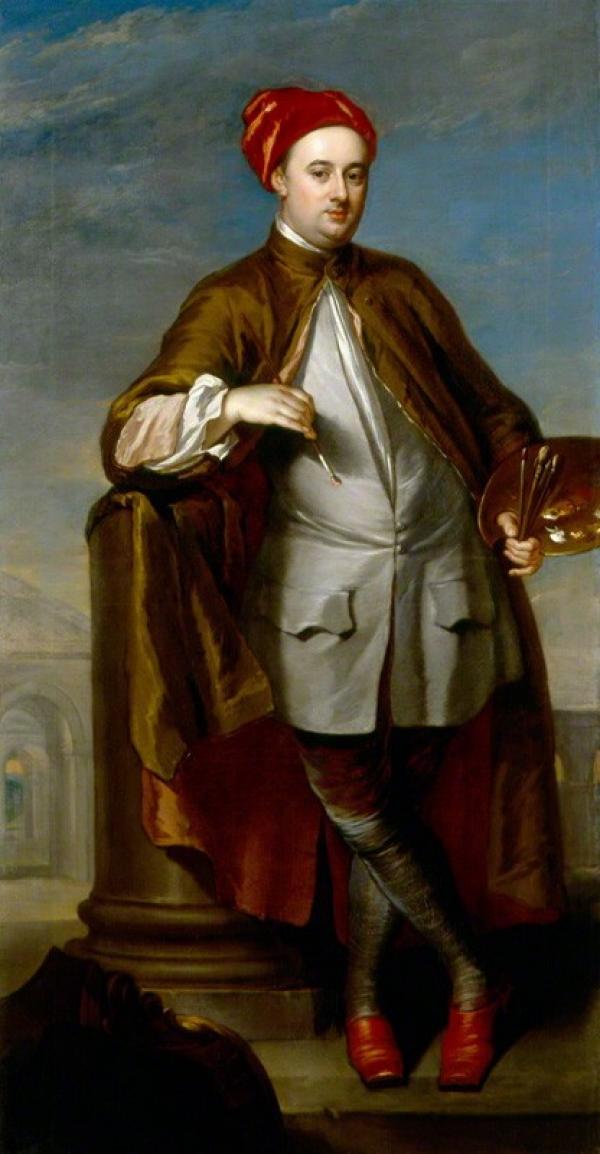In March 2014 the V&A will host a major exhibition dedicated to the work of William Kent, the most prominent artist, designer and architect of the early Hanoverian period. This will be the first ever full-scale exhibition to reflect the comprehensive range of Kent’s talents and influence upon British design and will include furniture, metalwork, illustrations, sculpture and paintings, as well as architectural drawings and garden designs. The show is the result of a five-year research collaboration between the V&A and the Bard Graduate Center in New York, where it will open in September of this year.
Delivering an exhibition of this scale is a long and complex process, and in this blog I will try to convey some of the privileges and challenges that constitute life behind the scenes, and the ideas and logistics that influence what the final version of the show will look like. I also see the blog as an opportunity to share some of the most interesting things I’ve learned during the course of working on this project. I hope it can be a forum for sharing thoughts about the exhibition, about William Kent’s work and influence across the country, and about the place of historic design in contemporary design practice.
Portrait of William Kent by William Aikman © National Portrait Gallery
It’s been a while…but haven’t we met somewhere before?
Can you remember what you were doing in the Autumn of 1998? To set the scene, this is a world in which Bill Clinton is still president of the United States, Google is a newly-founded company, and (to use that quintessential marker of long-lost time) the Spice Girls are number one. I have just started secondary school so am preoccupied more with matters of vital importance such as looking cool in a slightly-too-large blazer than the finer points of Hanoverian aesthetics. And in the marvellous Sir John Soane’s Museum in Lincoln’s Inn Fields there is an exhibition about William Kent, the Georgian architect and designer. It closed in December of that year, and there hasn’t been a museum exhibition about Kent since.
The chances are, then, that you might not feel particularly well-versed in exactly how Kent’s stylistic versatility and creative ingenuity influenced design in Georgian England. Or how his pictorial imagination engaged with eclectic sources and ultimately liberated him, and Britain, from a purely Palladian aesthetic. Possibly you have never heard of William Kent. But it’s almost certain that you will have been face-to-face with his designs at some point. The majority of his extant work exists in country houses and gardens (most notably Chiswick House, Holkham Hall, Houghton Hall, Raynham Hall, Rousham House and Stowe House), and the exhibition will bring together some of the many designs for and objects from these houses, as well as those already in the V&A’s collection.

Design by William Kent for a side-table for Houghton Hall, 1731. V&A 8156 © Victoria and Albert Museum, London. The little figures below the table, showing foreign ecclesiastics, are typical ‘incidental’ Kentian sketches and were not intended to be part of the finished table!
But there’s plenty scattered around central London too, and future blog posts will draw attention to the Kent in our midst. For example, if you watched the Beach Volleyball at last summer’s Olympics, you’ll a) no doubt have kept your eyes firmly on the architecture, and b) have spotted the Horse Guards Parade, designed by Kent shortly before his death in 1748.

An alternative version of the Horse Guards façade, built by John Vardy after an original design by William Kent. V&A 3316 © Victoria and Albert Museum, London
However the aim of the exhibition, and of this blog, is not simply to attach a name to some famous buildings or showcase some charming drawings and fancy chairs. It’s also about how design functions as part of its wider context, and about the influence that the material world of buildings and objects exerts on its surroundings. Like the more famous design reformers of the nineteenth and twentieth centuries, Kent and his contemporaries also recognised the importance of ‘good’ design and its role in social and political improvement. In designing this exhibition, we hope to convey Kent’s understanding of visual experience, and show the importance of these ideas at a time when Britain was busy designing itself as a nation.
